Smoking, drinking and drug abuse decline among U.S. teens, who prefer pot and vaping, study finds
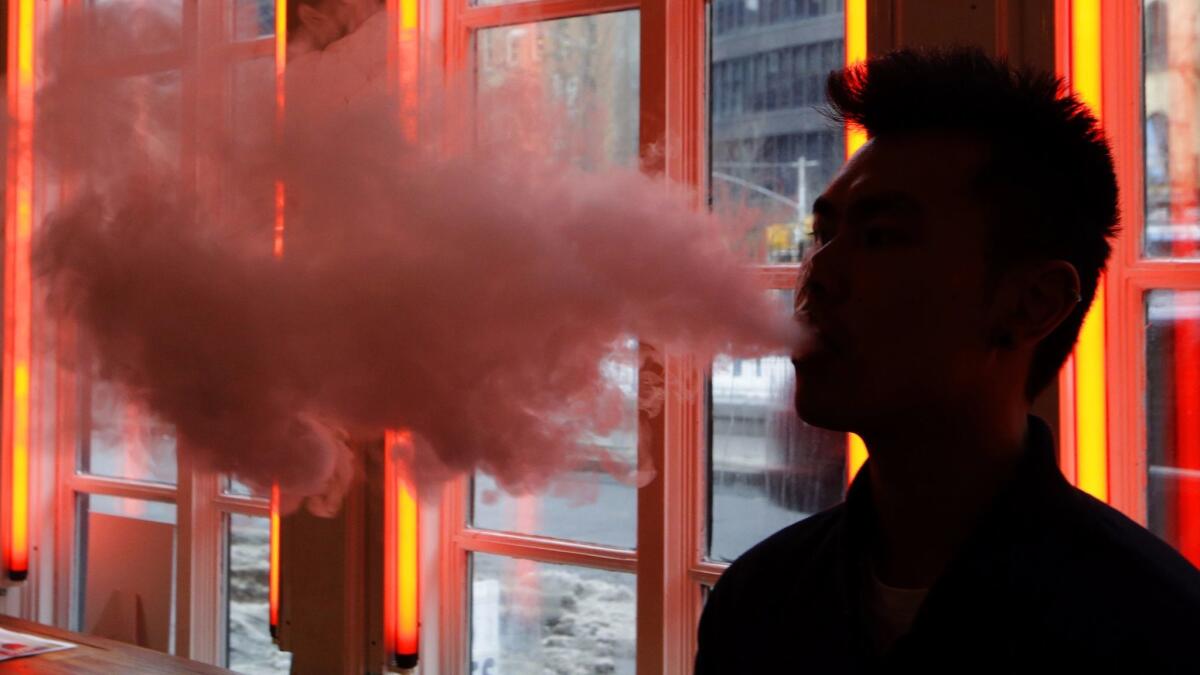
Drinking, smoking and drug abuse are on the decline among American teenagers, in some cases falling to the lowest levels seen in decades, according to the latest results from an annual nationwide survey.
About 1 in 3 middle and high school students surveyed in 2017 said they had used some kind of illicit drug sometime in their life. Two decades ago, that figure was 43%.
Likewise, 17% of students surveyed in 2017 said they smoked cigarettes at least once, and 26% said they had been drunk. In the 1990s, those figures reached highs of 58% and 46%, respectively.
“The rates of drug use among teenagers in our country are the lowest they’ve ever been for some drugs,” said Dr. Nora Volkow, director of the National Institute on Drug Abuse.
A notable exception to this trend is marijuana use. The proportion of teens who said they had tried it has remained steady over the last decade, even as other forms of drug use fell.
These findings were based on a survey of about 45,000 students from 380 middle and high schools across the country who participated in the University of Michigan’s Monitoring the Future study. Funded by the National Institute on Drug Abuse, the study has been tracking the use of cigarettes, alcohol, drugs and other illicit substances by eighth-, 10th- and 12th-graders since 1975.
A full report on the surveys conducted this year will be published by the end of April. In the meantime, here’s a look at some of the new data, which were released Thursday.
Marijuana
Teens have adopted a more accepting attitude toward marijuana, with 64.7% of high school seniors saying they disapprove of regular use. That’s down from 68.5% of seniors last year. In 1991, 40.6% of seniors said they saw “great risk” in smoking marijuana from time to time; in 2017, only 14.1% agreed with that assessment.
Accordingly, use among teens increased in 2017, the first time this has happened in seven years. More than one-third of high school seniors (37.1%) said they had used the drug at least once in the last year. So did one-quarter of high school sophomores (25.5%) and 1 in 10 eighth-graders (10.1%).
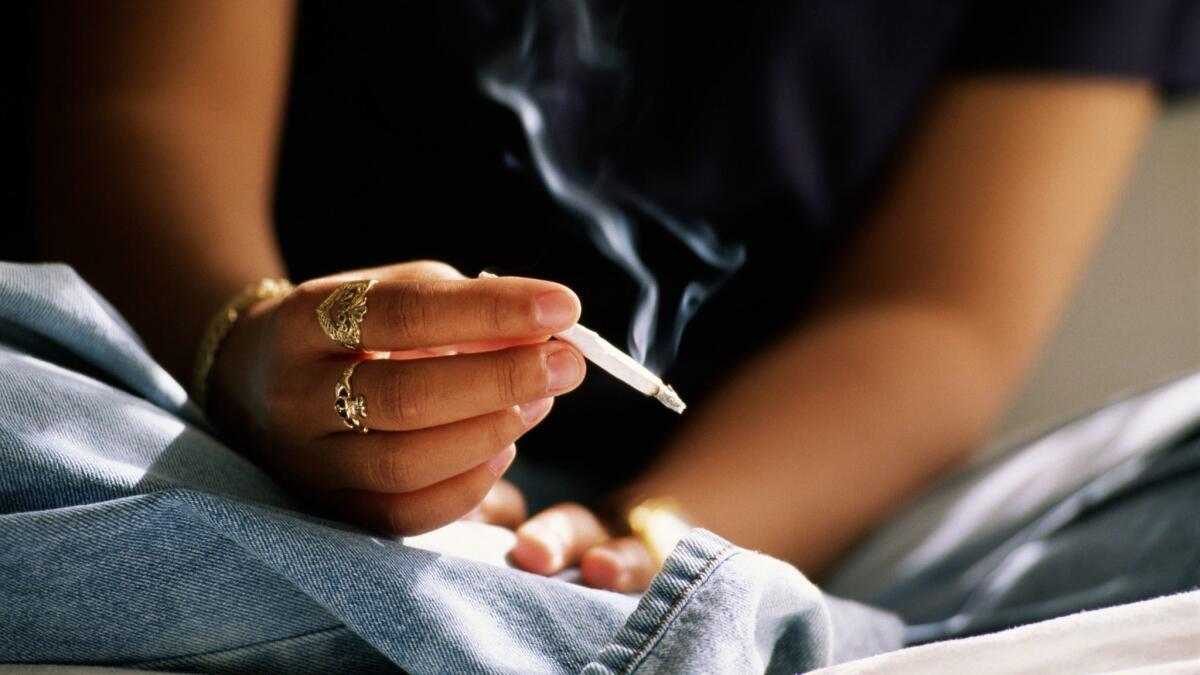
Initiatives that have legalized marijuana for medical or recreational use in many states appear to be a factor behind its rising popularity among teens. The researchers found that high school seniors were more likely to consume edible marijuana products in states where medical marijuana was legal (16.7%) than in states where it wasn’t (8.3%).
“I think if we did not have all these changes in policy and norms, we would have seen a decrease in marijuana use just like we would have seen in other drugs,” Volkow said.
Vaping is becoming a common form of marijuana use. Hardly any teens said they had ever vaped marijuana in last year’s survey; this time, 10% of 12th-graders, 8% of 10th-graders and 3% of eighth-graders said they had done so in the last year.
Cigarette smoking
Teens may not be scared of marijuana, but they do view cigarettes as dangerous. Just under three-quarters (74.9%) of 12th-graders said they thought it was dangerous to smoke a pack of cigarettes a day, and 86.6% said they disapprove of a daily smoking habit.
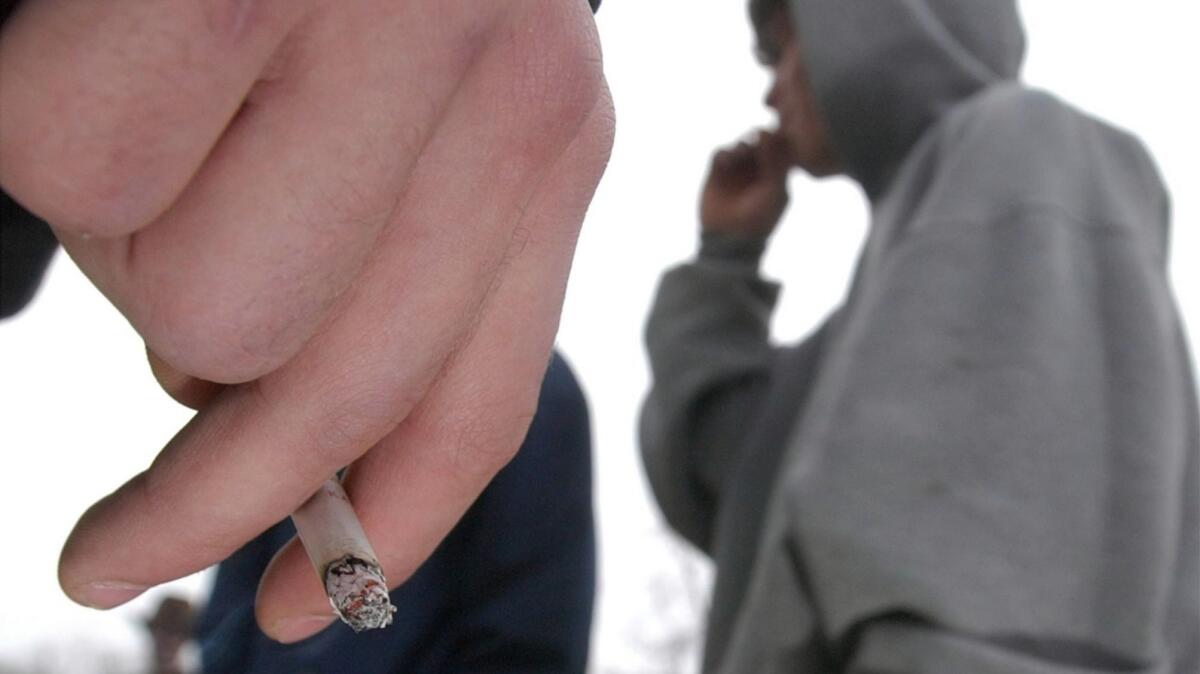
In the mid-1990s, when teen smoking was at a peak, 24.6% of high school seniors said they smoked cigarettes daily. So did 18.3% of 10th-graders and 10.4% of eighth-graders. In 2017, 4.2% of high school seniors, 2.2% of sophomores and 0.6% of eighth-graders reported a daily smoking habit.
“This is a major accomplishment, because cigarette smoking among teenagers is predictive of very adverse health outcomes,” Volkow said. Smoking also “puts them at greater risk of becoming addicted to other substances,” she said.
Nicotine vaping
Vaping appears to have replaced cigarettes as the primary nicotine delivery device for teens. At least 19% of high school seniors said they vaped nicotine in the last year, along with 16% of sophomores and 8% of eighth-graders.
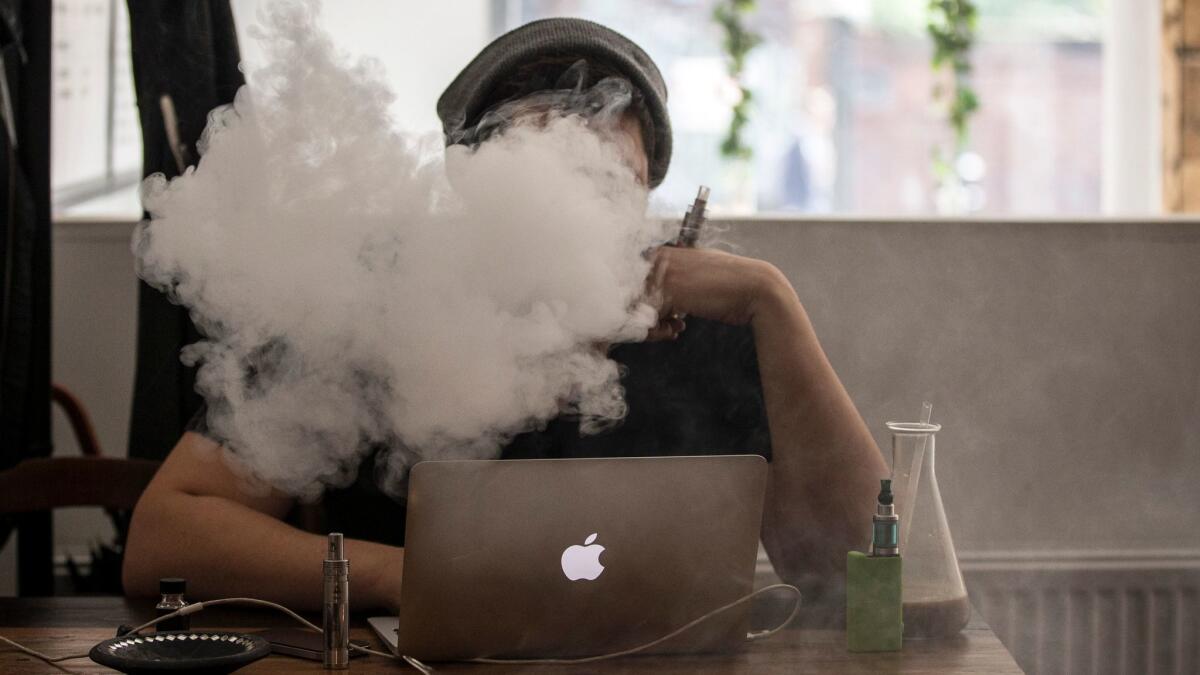
“Vaping has progressed well beyond a cigarette alternative,” Richard Miech, a senior investigator on the Monitoring the Future project, said in a statement. He added that these figures may underestimate the number of students who vaped nicotine, since the drug may have been present in other vaping liquids without teens realizing it.
This embrace of vaping may portend a future rise in cigarette use, Volkow warned.
“Overall, the consensus is that nicotine, when you take it by vaping, is less dangerous than when you smoke combustible tobacco,” she said. “But nicotine is an addictive drug.” It will take time to see whether vaping makes teens more likely to become cigarette smokers, but early studies suggest this may be the case, she said.
Other tobacco
Increased interest in vaping appears to have cut into interest in hookah pipes. The survey recorded a steep drop in past-year hookah use, from 23% among all age groups in 2014 to 10% in 2017.
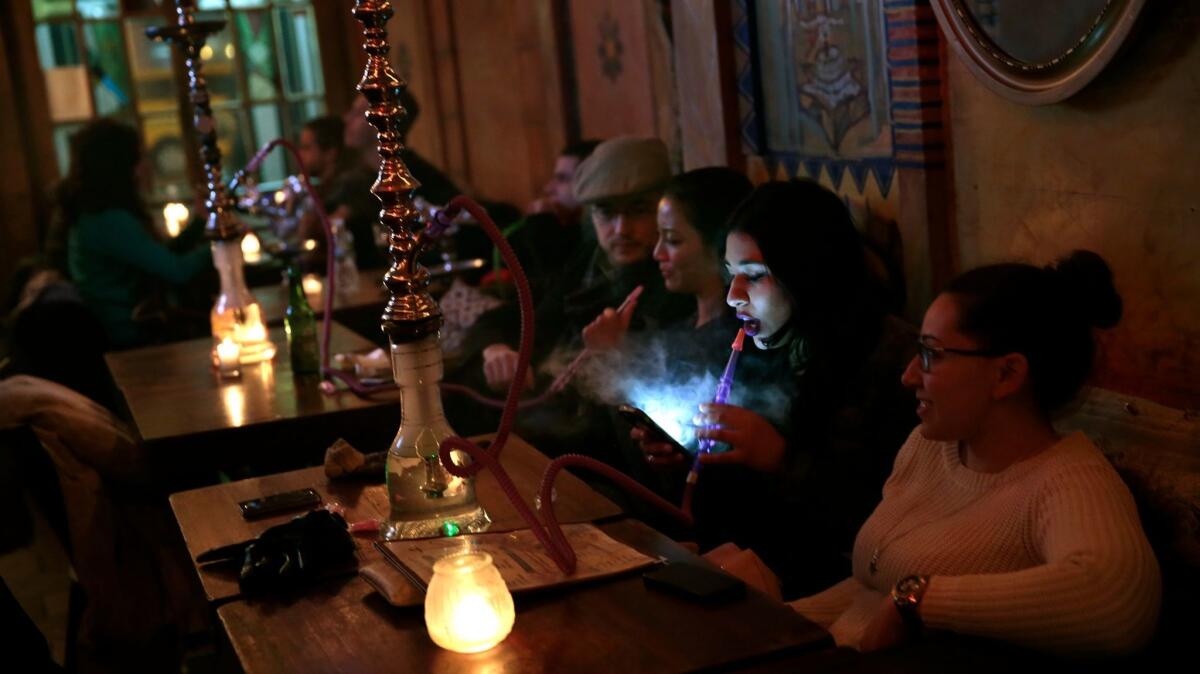
Use of snus — a moist, powdered form of smokeless tobacco — fell for all three grades combined, with 2.6% of surveyed students saying they had used it in the last year. Recent use of any kind of smokeless tobacco was down as well; overall, 3.5% of students said they used smokeless tobacco in the last 30 days.
The researchers reported that 5.4% of all surveyed students said they smoked flavored little cigars in the previous month, and 3.7% said they’d smoked regular little cigars during the same period.
Alcohol
A decades-long decline in alcohol use came to a halt in 2017, with no significant change in drinking behavior for students in any grade compared with 2016.
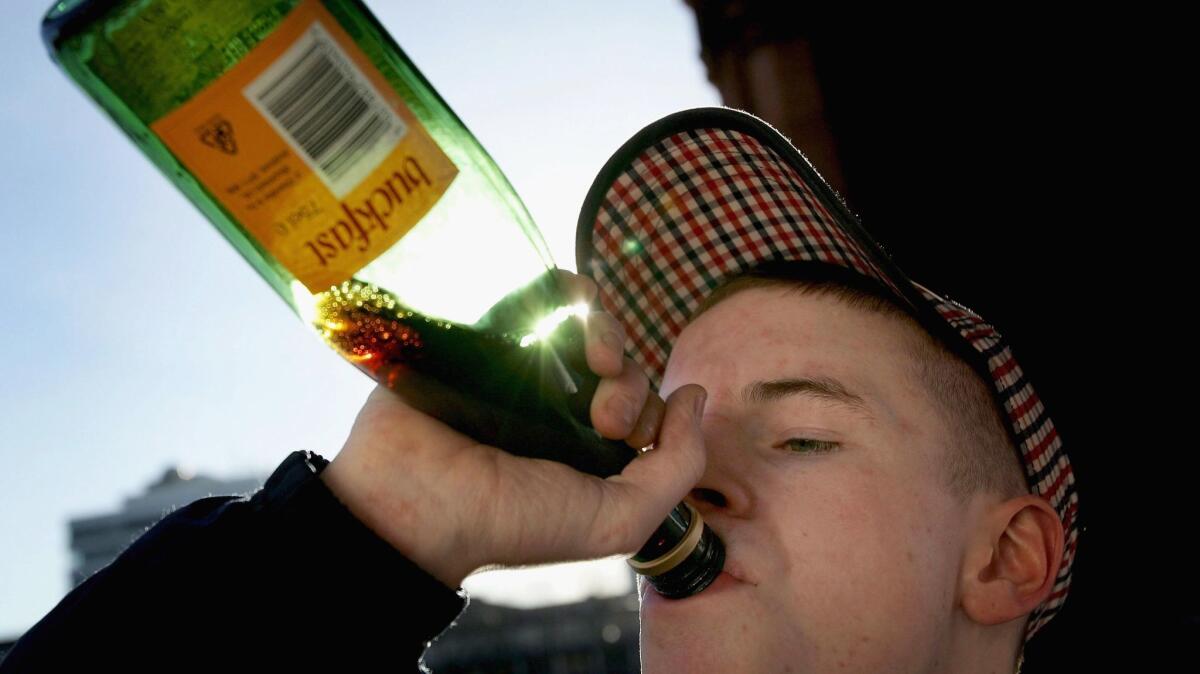
One-third (33.2%) of high school seniors said they had used alcohol in the last 30 days, along with 19.7% of sophomores and 8% of eighth-graders. A considerable number of them drank to excess, with 19.1% of seniors, 8.9% of sophomores and 2.2% of eighth-graders saying they had gotten drunk in the previous month and 16.6% of seniors, 9.8% of sophomores and 3.7% of eighth-graders binge-drinking (downing five or more drinks in a row) within the two weeks before they took the survey.
That said, alcohol use is far lower than in 1991, when 54% of seniors, 42.8% of sophomores and 25.1% of eighth-graders used alcohol at least once in the last 30 days.
Opioids
Use of prescription painkillers fell to new lows, even as the opioid epidemic continues to plague adults.
The percentage of high school seniors who said they misused OxyContin in the last year fell to 2.7%, less than half the number from 2005. In addition, 2.2% of sophomores (down from a high of 5.1% in 2009) and 0.8% of eighth-graders (down from a high of 2.6% in 2006) said they had abused OxyContin.
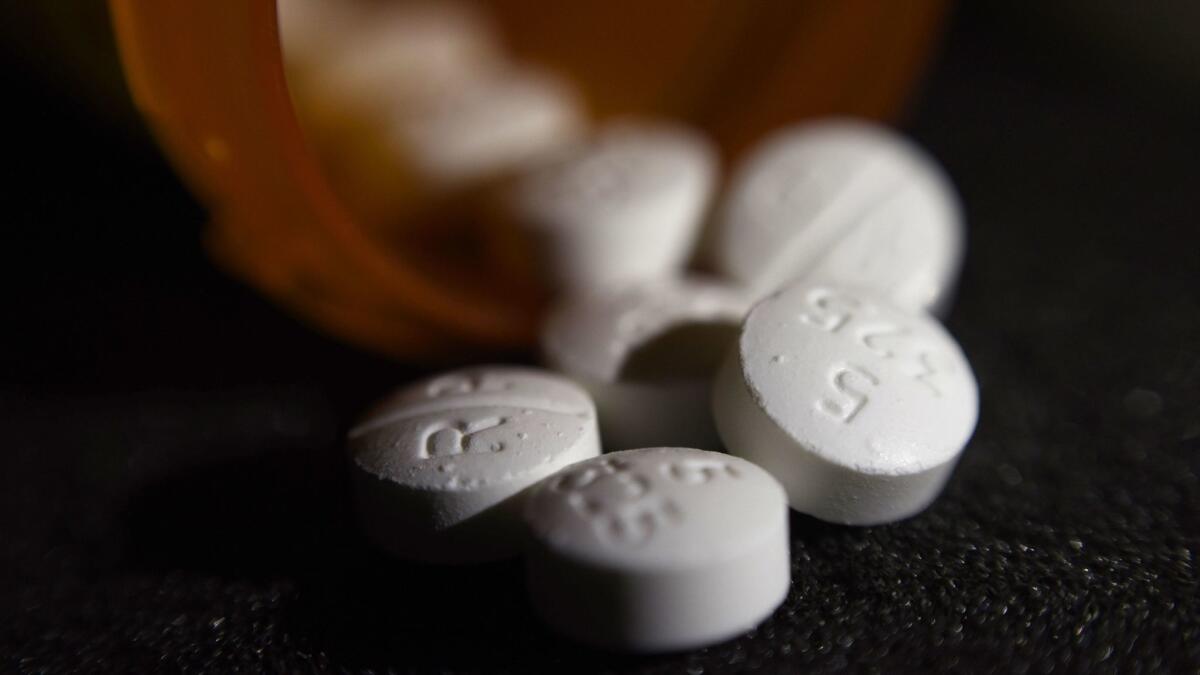
Vicodin continued to lose appeal as well. The survey found that 2% of seniors, 1.5% of sophomores and 0.7% of eighth-graders abused the combination hydrocodone-acetaminophen drug in the last year. Those figures are down from 10.5% for seniors in 2003, 8.1% for sophomores in 2009 and 3.0% for eighth-graders in 2006, and all three are lower than at any point since survey-takers began tracking Vicodin use in 2002.
These declines may be a sign that efforts to reduce the supply of excess prescription opioids are paying off, Volkow said. In 2010, more than half of 12th-graders (54.2%) said the class of drugs that includes opioids were either “fairly easy” or “very easy” to get; in 2017, only 35.8% agreed.
Other illicit drugs
Illicit drugs have become less popular across the board.
Among high school seniors, 2.7% said they had used cocaine in the last year, as did 1.4% of sophomores and 0.8% of eighth-graders. In addition, 1% of seniors, 0.6% of sophomores and 0.5% of eighth-graders said they had used crack in the previous 12 months.
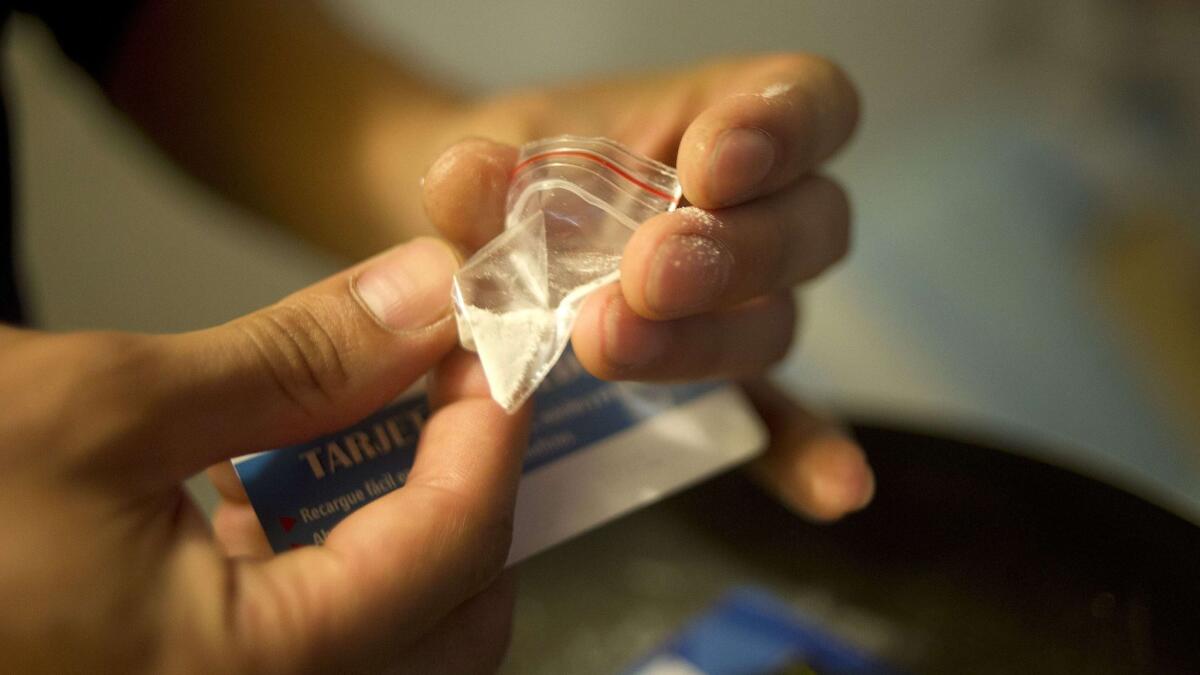
LSD use was 3.3% among 12th-graders, 2.1% among 10th-graders and 0.9% among eighth-graders. Heroin registered barely a blip, used by just 0.4% of seniors, 0.2% of sophomores and 0.3% of eighth-graders.
Crystal meth was used by 0.8% of high school seniors, the only age group asked about this use.
Follow me on Twitter @LATkarenkaplan and "like" Los Angeles Times Science & Health on Facebook.
MORE IN SCIENCE
Babies born to moms who lived near fracking wells faced host of health risks, study suggests
Is 'man flu' real? Medical science delivers comfort to helpless male snufflers
Shopping for healthcare online? The odds are stacked against you




